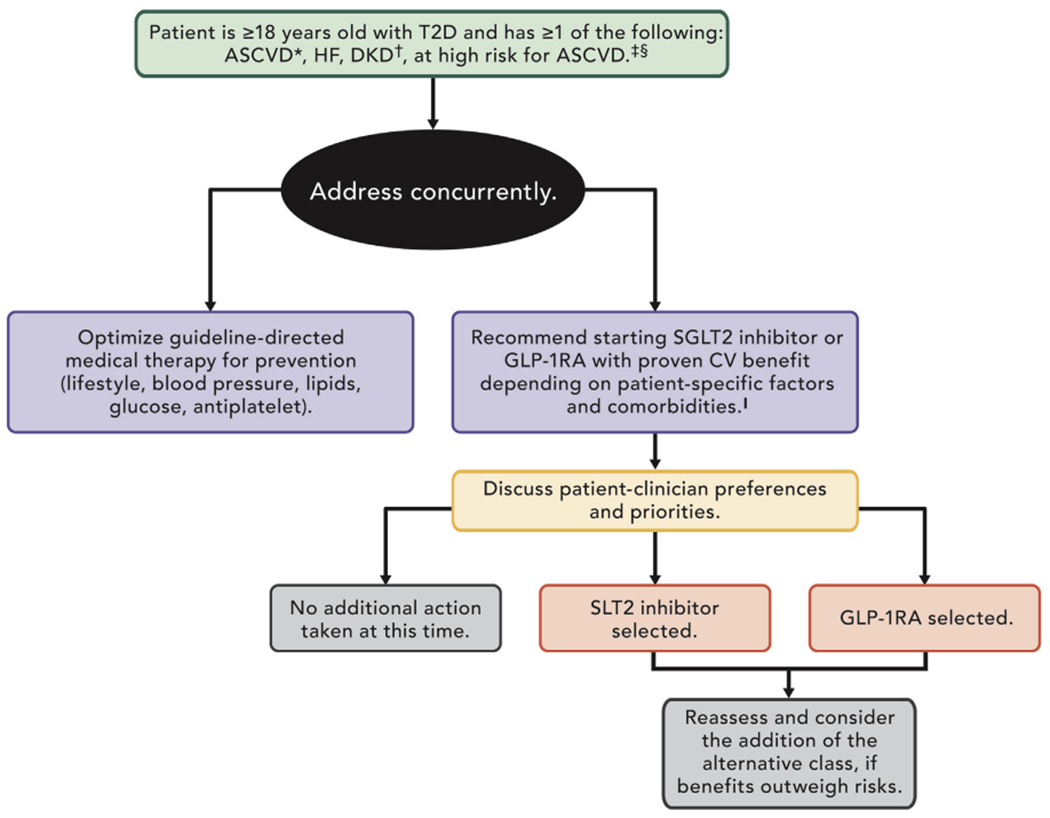FIGURE 1. Summary Graphic.

*ASCVD is defined as a history of an acute coronary syndrome or MI, stable or unstable angina, coronary heart disease with or without revascularization, other arterial revascularization, stroke, or peripheral artery disease assumed to be atherosclerotic in origin.
†DKD is a clinical diagnosis marked by reduced eGFR, the presence of albuminuria, or both. Consider an SGLT2 inhibitor when your patient has established ASCVD, HF, DKD or is at high risk for ASCVD.
‡Consider a GLP-1RA when your patient has established ASCVD or is at high risk for ASCVD.
§Patients at high risk for ASCVD include those with end organ damage such as left ventricular hypertrophy or retinopathy or with multiple CV risk factors (e.g., age, hypertension, smoking, dyslipidemia, obesity).
∥Most patients enrolled in the relevant trials were on metformin at baseline as glucose-iowering therapy.
ASCVD = atherosclerotic cardiovascular disease; CV = cardiovascular; DKD = diabetic kidney disease; eGFR = estimated glomerular filtration rate; GLP-1RA = glucagon-like peptide-1 receptor agonist; HF = heart failure; MI = myocardial infarction; SGLT2 = sodium-glucose cotransporter-2; T2D = type 2 diabetes
